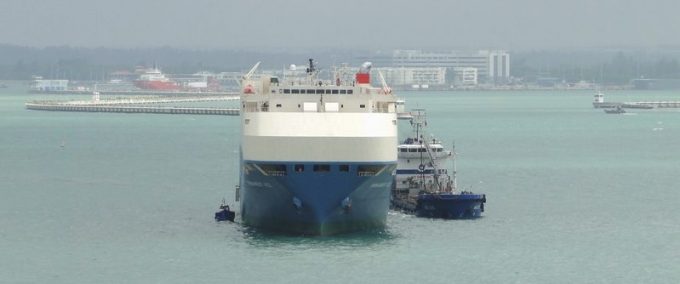Cost of 'land bridge' alternative to Panama Canal too high for carriers
Liner operators say they are unlikely to emulate Maersk in using land transport to circumvent ...

Thailand is pushing for an alternative Asia Pacific-India-Middle East trade corridor to the busy Malacca Strait, a project it estimated would cost some $28bn.
Called “Land Bridge,” the project broadly calls for the development of deepsea ports on Thailand’s east and west coasts, backed by sophisticated rail and road networks for seamless cargo flow.
The eastern port is planned for the Chumphon province on the Gulf of Thailand, the other for Ranong province on the Andaman Sea.
The idea for an alternative maritime connector has been on the drawing board of the Thai leadership for some time, with progress stalled by investment challenges.
According to Thai officials, it has the potential to shorten transit times by an average of four days and reduce shipping costs by 15% on current levels.
“Land Bridge will be an additional, important route to support transportation and an important option for resolving the problems of the Malacca Strait,” prime minister Srettha Thavisin told US investors as he arrived in San Francisco this week for the 30th APEC [Asia-Pacific Economic Cooperation] summit.
The Malacca Strait, a narrow sea lane between Malaysia and Singapore, is considered the shortest link for freight moving from Asia-Pacific to India and the Middle East. But with growing traffic, there has been a high incidence of mishaps along the passage, in addition to shipping cost concerns, according to reports.
The Thai government has been scouting for investment support from global leaders in an effort to complete the project by 2030 and transform the South-east Asian economy into a major production and logistics hub, as trade diversification takes deeper roots in the region. To drive interest, the government is offering foreign companies more than 50% ownership in joint-ventures with local partners.
“It presents an unprecedented opportunity to invest in this commercially and strategically important project that connects the Pacific Ocean and the Indian Ocean, connecting people in the east with the west,” said Mr Thavisin.
According to data presented by Thai officials, the two new ports, Ranong and Chumphon, could see significant containerised trade expansion, estimated to reach some 19.4m teu and 13.8m teu, respectively.
However the project, despite its considerable logistics merits and potential boost for intra-Asia trade volumes, faces hurdles largely rooted in high construction costs and security concerns over long-running insurgency problems in Thailand’s southern provinces.
From a broader geopolitical perspective, it mirrors the ‘India-Middle East-Europe corridor’ plan that took shape at the recent G20 summit in New Delhi. Named IMEC, it was positioned to circumvent the traditional Suez Canal route.
But the much-hyped seven-nation partnership programme – involving sea and rail networks from Mumbai to Haifa in Israel – seems to have taken a “timeline” hit because of unanticipated large-scale unrest in West Asia, caused by the hostilities between Israel and Hamas.
With geopolitical trade tensions at a high pitch, new supply chain corridors seem to have become a bigger strategic game for economic growth ambitions.
Comment on this article